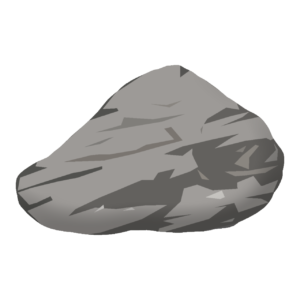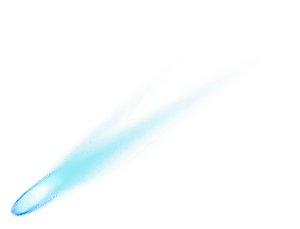The Downlink • Oct 11, 2024
Twinsies!
Space Snapshot

On Tuesday, Oct. 7, the European Space Agency’s Hera spacecraft launched, beginning its mission to study the aftermath of the first-ever field test of an asteroid deflection technique. Hera will travel to the asteroid Dimorphos, which NASA’s DART spacecraft slammed into in 2022 to test the kinetic impactor deflection method. Here, you can see Hera from the viewpoint of the SpaceX Falcon 9 rocket that launched it, moments after separation. Earth is visible in the background. Image credit: SpaceX/ESA.
Fact Worth Sharing

Dimorphos and Didymos, the targets of the DART and Hera missions, are a pair of asteroids gravitationally bound to each other. Scientists estimate that as much as 16% of all asteroids are found in pairs like this.
Mission Briefings


Europa Clipper’s launch has been delayed due to Hurricane Milton. Originally scheduled to launch on Oct. 10 from the Kennedy Space Center in Cape Canaveral, Florida, the mission to study Jupiter’s icy moon will not launch until the hurricane has passed. The spacecraft has been secured in SpaceX’s hangar to protect it from the severe weather. Its launch period stretches until Nov. 6. Pictured: The spacecraft shortly before being loaded into the rocket’s payload fairing. Image credit: SpaceX.

The asteroid that killed the dinosaurs may not have been the only one to hit Earth at that time. Researchers studying an underwater impact crater off the coast of West Africa believe that it was created by an asteroid that slammed into the Earth between 65 and 67 million years ago, around the time of the famous Chicxulub impactor. Although smaller than the dino-killer, this asteroid would likely have had major effects on the planet, including causing a tsunami more than 800 meters (2,600 feet) high.

NASA has turned off one of Voyager 2’s science instruments to save power. The spacecraft has been in space since 1977 and is now more than 20.5 billion kilometers (12.8 billion miles) away. Its power supply is running low, so mission engineers turned off its plasma science instrument, leaving three other instruments operational. The spacecraft should have enough power to continue operating with at least one science instrument into the 2030s.

There’s more water ice on the Moon than we thought. New research using data from NASA’s Lunar Reconnaissance Orbiter suggests that water ice may be present in permanently shadowed craters across a wider area of the Moon than previously estimated. This could provide a valuable resource for future human exploration.
From The Planetary Society


Europa Clipper is a mission backed by space advocates. Starting in 2013, The Planetary Society led efforts to convey to the U.S. Congress the value of a mission to Europa, including events like the one pictured above, where a panel of experts explained the icy moon’s potential in the search for life. Learn more about the tumultuous history of the mission in this week’s Planetary Radio, featuring a discussion with Planetary Society Chief of Space Policy Casey Dreier. Image credit: Tushar Dayal.

The U.S. presidential election is coming up. What might it mean for space? Two recent episodes of Planetary Radio: Space Policy Edition explore what we know so far about each presidential candidate’s potential space policies. First, hear from Dr. Greg Autry, who served on Trump’s NASA transition team in 2016 and was nominated for the position of NASA CFO in 2020, about what a Trump presidency could mean for space. Then, Lori Garver, former NASA Deputy Administrator, joins the show to discuss the potential space policy priorities of a Harris Administration.
New in the member community


The October book club pick is here! This month, The Planetary Society’s virtual book club will be reading "Life as No One Knows It" by Sara Imari Walker. Walker is an astrobiologist, a theoretical physicist, deputy director of the Beyond Center for Fundamental Concepts in Science, and a professor at Arizona State University. Her research aims to build a fundamental theory for understanding what life is. In this book, she introduces Assembly Theory, a groundbreaking concept with significant implications for AI and the search for extraterrestrial life.

In case you missed it… Last month’s virtual book club meeting featured a discussion with Planetary Society Chief Scientist Bruce Betts about our new book series for kids, "Explore the Cosmos." You can watch the recording here. Plus, catch the recording of a virtual star party at the Mount Wilson Observatory in Los Angeles, California, including stunning views of Saturn through a 60-inch telescope and a discussion with “Star Trek: Voyager” star Tim Russ.

Want the inside scoop on space policy? On Oct. 17, join Planetary Society Chief of Space Policy Casey Dreier and Director of Government Relations Jack Kiraly for a virtual briefing and Q&A on the latest in space policy and advocacy.
All of these events are exclusive to Planetary Society members. Not yet a member? Join today.
What's Up

The Comet C/2023 A3 (Tsuchinshan-Atlas) is predicted to be at its brightest until Oct. 12, near the western horizon after sunset. While you’re out comet hunting in the evening, look for super bright Venus close to the western horizon and yellowish Saturn rising in the east. Saturn will remain visible through most of the night, joined by the Moon on Oct. 13-14. Reddish Mars rises in the east in the middle of the night and is high up by dawn, with very bright Jupiter above it. Find out what else to look for in October’s night skies.
Show off your love of space in style

The Planetary Society’s merch partner, ChopShop, has a new collection of button-down shirts featuring three designs, each commemorating a distinct aspect of humanity's journey into the great unknown: groundbreaking scientific discoveries, pioneering deep space probes that have ventured beyond Earth orbit, and historic rockets that carry us and our robotic explorers into the vast beyond. You can order yours now through ChopShop’s Kickstarter for the project.
Join now and save space missions

If you are not already a member, become one TODAY and help shape the future of space science and exploration by fueling mission-critical advocacy efforts. Here’s just one example: The Planetary Society led efforts in Washington to re-establish funding for NASA’s Venus orbiter VERITAS — and we won! This was only possible because of the support of our members. VERITAS will produce the first global, high-resolution topographic and radar images of Venus, revealing the secrets of Earth's twin planet.
Will you join their ranks and help more missions reach the finish line?
Wow of the Week

Mars and Earth may be very different, but the two rocky planets share some common features. Planetary Society member Ian T.W. Flynn highlighted one such commonality by creating this side-by-side comparison of a newly identified volcanic spatter cone on Mars and a spatter cone in Iceland formed during the 2021 Fagradalsfjall eruption. While Mars is no longer volcanically active, its surface still bears the marks of its volcanic past. Image credit: NASA/JPL-Caltech/Univ. of Arizona (left), ESA (right), Ian T.W. Flynn.
Send us your artwork!
We love to feature space artwork in the Downlink. If you create any kind of space-related art, we invite you to send it to us by replying to any Downlink email or writing to [email protected]. Please let us know in your email if you’re a Planetary Society member!


 Explore Worlds
Explore Worlds Find Life
Find Life Defend Earth
Defend Earth

